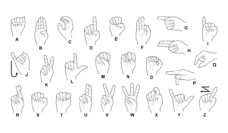The COVID-19 vaccine’s release a year into the pandemic provided hope to the world as the new and deadly virus traversed the globe. Health agencies had the primary goal of providing quick and accurate vaccine information. However, millions of people could not understand the vaccine reports on their local government’s website and faced multiple barriers to being protected against the virus. Roughly 25.3 million people in the U.S. cannot understand English well or at all. Compared to people who speak English, people with limited English proficiency (LEP) were more likely to contract and die from COVID-19 and less likely to receive the vaccine when it was rolled out.
Lack of accurate and available translations intensified the pandemic’s harm on people with limited English proficiency. Many depended on English-speaking friends and family, social media, and international news for COVID-19 communication. The pandemic also magnified the existing shortage of professional linguists and pushed many health care institutions to use automated translations like Google Translate. Automated translations are “strongly discouraged” by the Department of Justice due to frequent inaccuracies in medical terminology and cultural nuances. Many languages are also not included on translation software platforms. These many concerns prompted Nicole C. Tensmeyer and colleagues to review translations on federal, state, and Washington, D.C. COVID-19 websites.
The COVID-19 pandemic was an unprecedented time of uncertainty and devastation, and inadequate language services blindfolded millions of people across the country.
This research team analyzed and verified whether government websites used professional translations or machine translations of vaccine access resources in at least one non-English language. Of the 52 COVID-19 websites analyzed, only 27 provided professional translations, 17 provided machine translations, and eight provided no vaccine access translations at all.
Federal laws and policies require federally-funded and state agencies to provide “meaningful access” to language assistance. Many cities and states have also implemented their own policies to expand language access. HHS and FEMA distributed notices that language access laws are not waived during a national emergency, and compliance was mandatory during the COVID-19 response. But numerous government and health care agencies did not comply.
In April 2021, the National Health Law Program filed a complaint with the Department of Health and Human Services documenting multiple civil rights violations stemming from COVID-19 communication barriers. The investigation found translations provided by The City and County of Los Angeles were up to 50% inaccurate. The Massachusetts state COVID-19 website brought visitors to the English scheduling page after they selected Spanish, the second most spoken language in the nation.
The COVID-19 pandemic has been an unprecedented time of uncertainty and devastation, and inadequate language services have blindfolded millions of people across the country. But the country’s ill-preparedness to provide accessible information to its diverse population was a catalyst for policy change efforts. New York created an Office of Language Access in 2022; the federal government created new organizational grants for expanding language access in health care. Continued language access efforts that address health care inequities and expand multilingual resources are essential and may long outlive COVID-19.
Photo via Getty Images














